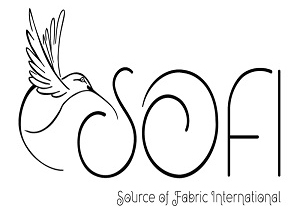Faux Leather: A Sustainable and Adaptable Substitute for Upholstery and Clothing
Examining the Faux Leather Industry and How Wholesale Fabric Suppliers Are Fulfilling Demand
Faux leather has become a popular alternative to real leather in recent years. It is an affordable, adaptable, and ethical material used in fashion, furniture, accessories, and car upholstery. As more consumers become environmentally conscious, demand for this synthetic material has surged. Wholesale fabric distributors have responded by offering a wide range of fabrics to meet this growing need. In this article, we’ll explore the benefits, uses, and increasing popularity of faux leather, along with the vital role wholesale fabric suppliers play in satisfying demand.
What is Faux Leather?
Faux leather, also known as synthetic leather, is a man-made material designed to resemble real leather in both appearance and texture. Unlike genuine leather, which comes from animal hides, synthetic leather is produced from polymers such as polyurethane (PU) or polyvinyl chloride (PVC). These materials are engineered to replicate the look and feel of traditional leather, offering a cruelty-free alternative for those who wish to avoid animal products.
Although synthetic leather doesn’t exhibit the natural grain patterns and imperfections of real leather, high-quality versions can look almost identical. Manufacturers often enhance the texture with techniques such as embossing, printing, and coating. Thanks to advancements in production, this material is now more durable, comfortable, and visually appealing.
Advantages of Synthetic Leather
1. Sustainability and Ethical Production
One of the main advantages of synthetic leather is its sustainability. Real leather production involves animal farming, significant water consumption, and the use of harsh chemicals for tanning. In contrast, synthetic leather is made from synthetic materials and contains no animal-derived products. This makes it an ideal choice for ethical and environmentally conscious consumers. Moreover, it has a lower carbon footprint, as it doesn’t require animal farming or contribute to deforestation.
2. Cost-Effectiveness
Synthetic leather is generally less expensive than real leather, making it a popular option for businesses and consumers on a budget. Its affordability has made it a favorite in various industries, including fashion, furniture, and automotive interiors. For both small businesses and larger buyers, purchasing synthetic material in bulk from wholesale fabric distributors allows them to access high-quality options at a significantly lower cost than real leather.
3. Variety of Styles and Textures
This material is available in various colors, textures, and finishes, offering a wide range of design possibilities. Manufacturers can create products that resemble classic leather, suede, distressed leather, or even exotic textures like crocodiles and snakeskin. This versatility enables them to design unique, high-end items without being limited by the constraints of natural leather.
4. Easy Maintenance
One of the benefits of synthetic leather is its low-maintenance nature. Unlike genuine leather, which can crack, stain, or fade over time, this material is more resistant to wear and tear. It is easy to clean, and it is less likely to wrinkle or develop creases, making it perfect for use in furniture, clothing, and accessories.
Common Applications of Faux Leather
Synthetic leather is used in a wide variety of products across multiple industries. Some of the most common applications include:
Fashion: Synthetic leather is used in the production of jackets, pants, skirts, handbags, shoes, and belts. It allows designers to create stylish, cruelty-free pieces without using animal products. Many fashion brands are incorporating this material as part of their commitment to sustainable fashion.
Upholstery: Synthetic leather is frequently used for furniture, including sofas, chairs, and ottomans. It offers a durable, easy-to-clean alternative to genuine leather, making it ideal for both home and commercial furniture manufacturers.
Automotive Interiors: This material is widely used in car interiors for seats, steering wheels, and upholstery. Its sleek appearance and easy maintenance make it an attractive option for automotive manufacturers who seek to reduce costs and environmental impact.
Accessories: Synthetic leather is commonly found in accessories like wallets, phone cases, belts, and watch straps. It offers consumers a cost-effective, stylish alternative to traditional leather goods.
The Role of Wholesale Fabric Suppliers
Wholesale fabric suppliers play a crucial role in ensuring businesses have access to the materials they need. These suppliers offer bulk quantities of synthetic fabrics, making it easier for manufacturers to produce or resell leather-like products. By purchasing in bulk from wholesale fabric distributors, businesses can obtain a variety of materials at competitive prices.
Wholesale suppliers often offer a broad selection of faux leather, including various textures, colors, and finishes. Some even provide custom options tailored for specific industries like furniture or automotive manufacturing. By collaborating with trusted wholesalers, businesses ensure they receive high-quality products that meet their production needs.
For companies looking to capitalize on the growing popularity of faux leather, working with reputable wholesale fabric suppliers is essential. It offers flexibility in terms of pricing, volume, and product variety while ensuring access to premium materials.
Why Faux Leather Is Gaining Popularity
Several key factors contribute to the rising demand for this material:
Consumer Awareness: As consumers become more mindful of the environmental and ethical impacts of their purchases, they are increasingly opting for synthetic leather products over those made from animal-derived materials.
Fashion Industry Shift: The fashion industry has widely accepted synthetic leather as a viable alternative to genuine leather. This shift is part of a broader movement toward cruelty-free and sustainable fashion.
Economic Benefits: Synthetic leather provides consumers with an affordable option that still maintains a luxurious look and feel. Its cost-effectiveness makes it a great choice for a variety of products.
Conclusion
F leather is rapidly becoming the material of choice for both consumers and businesses. Its affordability, versatility, and sustainability make it an appealing option across many industries. Whether in fashion, furniture, or automotive applications, synthetic leather is helping to drive the shift toward more ethical and eco-friendly production practices.
For businesses seeking to take advantage of this growing trend, working with trusted wholesale fabric suppliers is crucial. By sourcing high-quality materials at competitive prices, businesses can meet customer demand and support the growing movement toward sustainable manufacturing. Companies looking for reliable sourcing services can streamline their material acquisition process, ensuring they access top-notch synthetic leather and other fabrics that align with current market trends.
As demand for synthetic leather continues to rise, it is clear that this material will play an important role in shaping the future of fashion, furniture, automotive interiors, and beyond.


